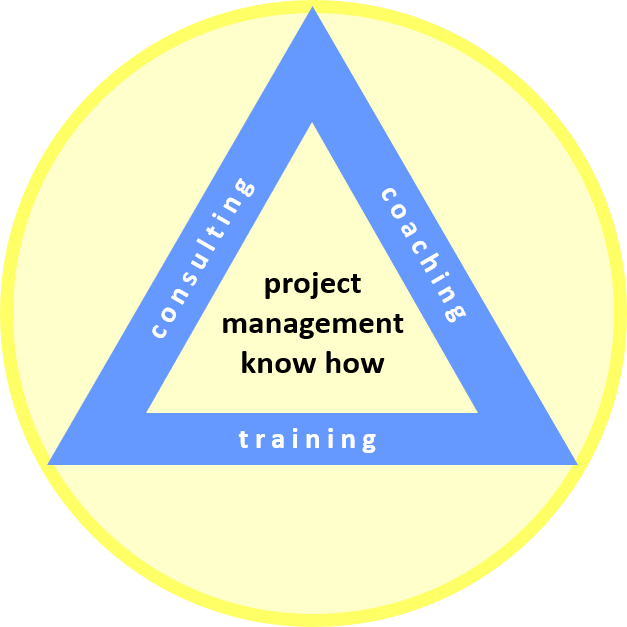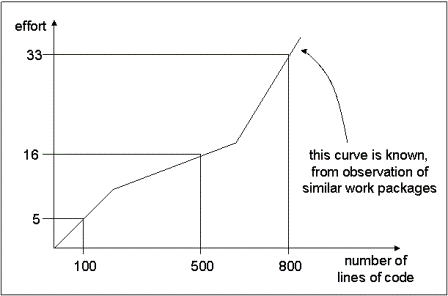Effort Estimation
Published: 2009-02-07
Last updated: 2022-03-20
Effort estimation represents step 3 of the project planning process.
Before we can plan the project schedule we have to estimate effort and duration of all the work packages of the WBS. Effort estimation will generate a lot more information than only effort and duration:
- Who will be responsible for each work package?
- What is the work package specification?
- What are the expected results of each work package?
- How is the achievement of the results measured?
- What are the prerequisites for the work package?
- What are the conditions under which the work has to be done?
- What are the required start and end times?
- What and how much material is needed for each work package, at what cost?
- What tools are needed for each work package, at what rates?
Effort estimation needs expertise on a work-package-specific level to accomplish this transition.
There are two categories of estimating the effort of each work package: deductive and inductive methods.
Deductive or Top-down Methods
Assume the total cost for the project is given. From there we assign the cost, and thus, the effort of individual work packages based on estimated percentages derived from earlier, similar projects with similar work packages. The advantage of deductive methods is a simple and rapid cost allocation, the disadvantage is that they only work for projects that consist of work packages we already know from earlier, similar projects.
Inductive or Bottom-up Methods
The basic idea of inductive methods is to start effort estimation with the work packages individually, with support of experts, or knowledge of similar work packages of earlier projects, and then summarize bottom up, following the structure of the WBS.
(1) Factor Analysis: For a certain work package, we know all the variables or factors, how they influence the work, and how these factors correlate with each other. Then we can calculate the effort based on a mathematical formula which reflects that influences and correlationswhich expresses the effort as function of influencing variables and certain correlation coefficients
Effort = f (influencing variables, correlation coefficients),
which expresses the effort as function of influencing variables or factors and certain correlation coefficients.
For example, the effort of a work package "Develop hardware control unit" is influenced by
the number of people involved, P=4,
the number of interfaces, S=5,
the number of functional blocks, B=10.
From earlier projects with similar control units we might know the correlation coefficients. For example, cP=2.5, cS=2, cB=1.5. Our formula could look like this
Effort = f(P, S, B) = cP*P + cS*S*S + cB*B =
= 10 + 50 + 15 =
= 75 (working days)
(2) Multiplication Method: If we can divide a work package into a number of equal parts then, we can estimate the total effort by estimating one part and then multiplying this value by the number of parts.
Total Effort = Effort of one part * number of parts
(3) Analogy Method: This method again applies the knowledge from similar work packages. We interpolate or extrapolate the effort for the work package from a similar one. For example, for the work package “Install electrical wiring in an apartment of 100 sqm” we could guess the effort by interpolation from similar work for apartments of 150 sqm, 10 working days, and 50 sqm, 6 working days:
Effort(100 sqm) = (10 + 6) / 2 = 8 working days.
(4) Function Point Method: For IT or software design related work packages we can apply the function point method. The prerequisite is that we need to have a lot of knowledge about the effort of work packages of similar scope and degree of difficulty, based on observation. Then the experts compile this knowledge into so called “function curves” which we can use to estimate effort for new work packages. In the following example we estimate the effort of work about creating 100, 500, and 800 lines of code. We obtain the effort via the corresponding function points on the function curve, 5, 16, and 33 working days, respectively.
(5) Delphi Method: For most of our work packages we use the Delphi method. We just ask the experts for each work package for their best guess, normal guess, and worst guess. Thus we obtain three figures for the expected effort: E(optimistic), E(normal), and E(pessimistic), then combine them with this formula
Effort = (E(optimistic)+4*E(normal)+E(pessimistic))/6.
If we can ask ten or more experts, we could even calculate the mean values and apply mathematical statistics with the concept of standard deviation.
Usually, we ask all the experts to join an effort estimation workshop which can be combined with a risk management workshop, of two, three, or more days depending on the number of work packages that have to be estimated.
35+ templates, tools, and checklists in one set
To save you time in your daily work as a project manager, I packaged more than 35 project management templates, tools, and checklists into one zip file.
- You un-zip it, and you get all items in formats you can edit to your requirements.
- They strictly contain only standard functionality and no macros or other code.
- You are allowed to use your logo.
or click here for more info.
Traditional PM
Learning Path Navigation
|
|
|
Return to Planning Phase
Return from Effort Estimation to Home
|
|
|




Your Comments
Have your say about what you just read! Leave me a comment in the box below.